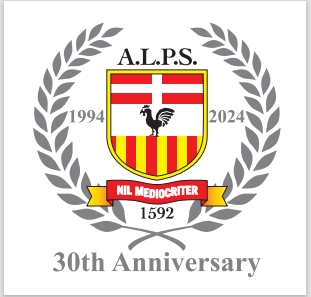The origins of The Lyceum
It was as early as the 18th September 1553 that Grand Master Claude de la Sengle and Bishop of Malta Domingo Cubelles invited Ignatius Loyola to establish a college in Malta, ostensibly for the teaching of Arabic and Turkish by Jesuits and to attract Maltese youths to join the Society of Jesus. The holy man, known to be zealous in his special mission to convert Muslims, approved the plan.
Still, it was only on the 28th March 1592 that Pope Clement VIII issued two briefs. In the one addressed to Grand Master Hugues Loubenx de Verdalle the Holy Father expressed his intention to erect a college run by Jesuits in civitate Melitensi and requested the Grand Master to give Bishop Tommaso Gargallo every assistance, possibly even making a monetary contribution. In the second brief, Gargallo was ordered to provide the land on which to build a college, church and residence for the Fathers, and to transfer to the Jesuits all the benefices and legacies earmarked for the establishment of a Diocesan Seminary.
Notary Giacomo Sillato drew up a contract at the Magisterial Palace on the 12th November 1592 stipulating the foundation of the college. Bishop Gargallo imposed on the Jesuits, represented on the contract by Padre Pietro Casati, the burden of opening a school for the teaching of grammar and the humanities. In 1727 the Rector of the Collegium Melitense, Padre Martino de Andrea, obtained from the General of his Order the faculty to confer degrees of Bachelorship, Licentiate and Doctorate in Philosophy and Theology.
Grand Master Manoel Pinto de Fonseca, authorised by Pope Clement XIV in his brief Sedule Romani Pontificis, decreed on the 22nd November 1769 that “from this moment We erect in this college a Public University of General Studies … For the better management of the said college and university, We hereby create the post of Protector who in Our place and under Our orders shall be supreme in the conduct of the institutions …”
On the 16th and 18th June 1798 Napoleon ordered that the University of Studies and the College be replaced by an École Centrale, but this projected reform never materialised. After the expulsion of the French from Malta, Civil Commissioner Captain Alexander Ball appointed Canon Francesco Saverio Caruana Rector and Director of the University and College, in recognition of his merits and services during the Maltese insurrection against the French.
A council appointed by the Governor, the Marquis of Hastings, proposed in its report for 1833 the unification of the lower schools – of which at the time there were three: the Primary School, known as the Terza Classe, the Grammar Class and the Humanities School – into one general public school to be called Lyceum or Grammar School with a modern system of education.
In the early 1940s (probably 1940/1) there was yet another amalgamation – this time it was the Central School with The Lyceum. This apparently took place because of a shortage of accommodation and staff. Students were moved around from The Lyceum in Merchants Street, Valletta, to Messina Palace in St Christopher Street, to Spinola Palace in St Julian’s and to a place in South Street, Valletta, probably what is now the National Museum of Fine Arts. To minimise movement in other areas and to spread the Lyceum students out as much as possible, branches of The Lyceum were opened in Sliema, Balzan and Rabat.
There was a time in 1945 when the education authorities decided to do away with the name “Lyceum”. The official reason for this was that the school age limit had risen, making more secondary schools a necessity, and the authorities felt that keeping the name “Lyceum” would be discriminatory. The students, including those who had already left The Lyceum and were at the Royal University of Malta, did not agree and held a demonstration which seems to have done the trick.
The name of The Lyceum lived on.
NOTE to readers: The last three paragraphs have been contributed by ALPS member Joseph Spiteri Gonzi, relying on memory. Similar contributions from other Lyceum Past Students (irrespective of membership of ALPS) will be most heartily welcome!
